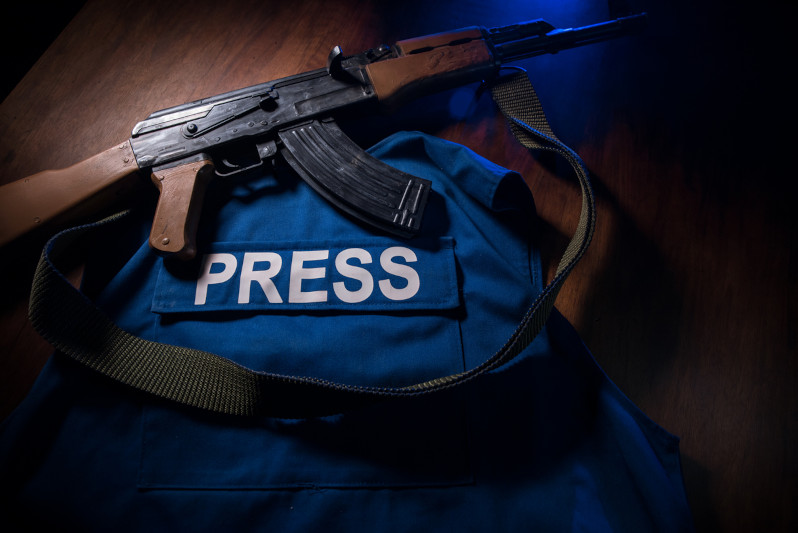Civilian casualties in Ukraine-5,000? In Yemen-380,000? But Western Media tells a different story!
August 21, 2022
Whilst resort to warfare must be strongly deprecated in virtually all circumstances, it is arguable that the media treatment of specific conflicts and the resulting casualtiesboth civilian and militarydiffers considerably from war to war and can easily break down into black and white categories, based on factors other than the war itself. The recourse to particular forms of categorisation tells us as much about the media itself as it does about the particular conflicts being reported upon.
Reportage of wars is undoubtably difficult, as the warring sides will consistently use propaganda to press their own innocence and outrage. Casualty figures and types of casualtiescivilian or militaryare always employed to push a particular line of guilt or innocence of one side or the other. Equally, those media outlets in countries not directly involved in any given conflict will tend towards a style of reporting guided by formal or informal international alliances or other factors, not necessarily by the actual available data from the theatre of war.
In the case of the Russia-Ukraine war the mainstream media, both print and electronic media, has been conspicuous in using human interest storiesfocussing on one individual or a single family in Ukraineto rouse the interests of those incapable or unwilling to canvas the larger picture. Particular individuals or families are focussed upon and a potted biography is given of their life situation before hostilities began, and what has been their subsequent fate. This is perhaps a consequence of the number of war correspondents on the ground, and their incapacity to source figures of casualties beyond the military forces and those directly involved in the fighting. However, the former are reported in non-mainstream media outlets. ABBC reportgives the number of reported deaths inUkraine as 10, 470 between 24/2-24/6/22, almost certainly understated,and there would have been many more since then. Of these between 3600 and 4700 were civilian deaths.
The civilian casualties in theIraq war (185,000-208,000) and the war in Yemen(380, 000), as well as theAfghanistan war (70,000) are difficult to determine with any accuracy, but they certainly run into the hundreds of thousands if not millions. Similar is the situation in the on-going Israel-Palestine conflict between 2000 and 2014 where the casualties are overwhelmingly on the Palestinian side (approximately 7000 Palestinians and 1100 Israelis). These figures almost certainly understate the total casualties, yet such figures have rarely appeared in the mainstream media, focus being placed mainly on isolated incidents, especially those involving terrorist acts attributed to Islamic terrorist groups. And if they can show pictures of actual explosions and rockets being launched, or destroyed buildings, whilst important, this is primarily designed to convey a sense of horror in the viewer. The more long-term effects on casualties produced by destruction of various kinds of infrastructure, health services, and the resulting starvation tend to be played down, if mentioned at all.
What are we supposed to conclude through all of these figures? Is there a definite difference in the Australian medias coverage of wars involving people in cultures which are somewhat like ours, as opposed to those with which we might seem to have a cultural clash? This is especially the case with Muslims and it would certainly be the same if we went to war with the Chinese. I suspect the attitude is also the same with our treatment of Russia, which has always had a bad press in the West.
The main issue here is that the media treat certain societies and countries as categories, whereas other societies, more familiar to us, can be broken down into individuals and groups with similar interests, demands and concerns as us.This is demonstrative of the major chasm still existing between the perception of third and first world cultures, and Muslim and non-Muslim cultures. Such a discrepancy in perception is pushed along by the mass media and prevents a much more nuanced view to be taken by the public of ongoing conflicts and the historical conditions that have given rise to them. Here, as signalled often in P&I, the American interventions in Eastern Europe since 1991 have done much to cause the present situation in Ukraine, but these have largely been ignored in the kind of press coverage the conflict has been given in the West.
What would impartial reporting produce and is it at all possible for it to occur? What is very obvious is that the strong sympathy accorded to Ukraine in the mainstream media in Australia and other Western countries has completely obscured the historical perspective telling us how these conflicts may have originated and how they might be prevented in the future. It is true that Ukraine is a distant horizon for most Australians, but it occupies a space in culture much closer to us than cultures in the Middle East and Central Asia. And whilst it is necessary to report as accurately as possible what is going on there, so should there be a consistent approach to the coverage of conflicts in non-European countries.
In the final analysis we can agree with journalist Andrew Quiltysassessmentof the situation in Afghanistan and other related theatres of war, As Western journalists in Afghanistan, he went on, we always had this funny duality. On the one hand, we were objective journalists, right? Which is a very Western conceit that involves travelling to someone elses war and observing it from above. On the other hand, we were materially and socially grounded in and ideologically linked to one side of the war.

